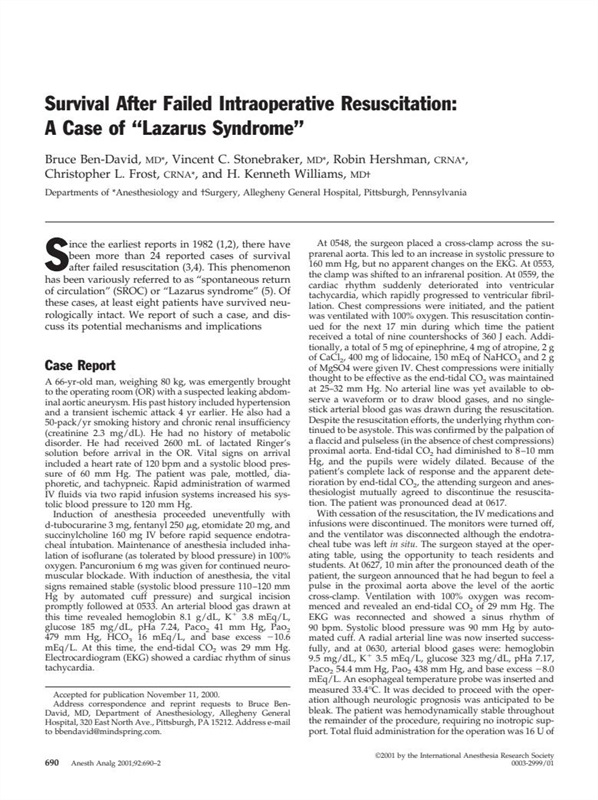Date Filed: ██/██/2025
Filed By: Mindy Langley, Parascientific Unit
Definition:
Lazarus Syndrome, or auto-resuscitation after failed cardiopulmonary resuscitation (CPR), refers to the spontaneous return of circulation after failed attempts to revive a patient. This phenomenon, though extremely rare, is medically documented and still widely misunderstood.
Known Medical Explanations:
- **Hyperinflation of the lungs**: CPR can cause air trapping, which leads to a delayed release of intrathoracic pressure and spontaneous return of circulation.
- **Delayed effect of medications**: Adrenaline or epinephrine administered during resuscitation may take time to affect the body, potentially reviving the patient after CPR is halted.
- **Electrolyte shifts and metabolic changes**: These may affect cardiac function post-CPR.
- **Mechanical movement or artifact**: Can be mistaken for signs of life but later confirmed as genuine revival through vitals.
Documented Cases:
- A woman in Colombia regained a heartbeat and consciousness 45 minutes after being declared dead. No neurological damage was reported.
- A British man declared dead for 21 minutes showed spontaneous return of circulation after CPR was stopped.
- Several U.S. hospital cases show similar recoveries within 10–15 minutes post-declaration of death.
Parascientific Implications:
These anomalies challenge the medical boundary between life and death. Lazarus Syndrome exhibits similarities to Subject Class-2 "near-death phase loops" observed in experimental necrobiotic simulations at Langley. Parallels drawn between Lazarus Syndrome and unstable bio-reactivation patterns noted in early undead specimens.
Field Notes:
- Residual electrical activity has been theorized as a trigger, but observed readings fall outside normal ranges in several Lazarus cases.
- Some cases include post-revival hallucinations, incoherent speech, or fear of being "followed."
Visual Reference:
Scanned archive fragment (click to enlarge):
